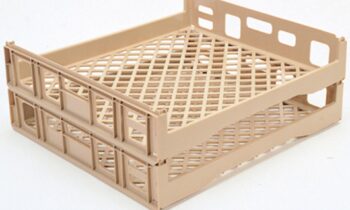When consumers buy milk, eggs, meat, and other animal-based foods, they expect a fresh, high-quality, and safe product. But achieving this standard requires diligent care and robust quality assurance practices all along the farm-to-table journey.
From birth to processing, livestock must be raised responsibly while adhering to exacting health, welfare, and safety protocols. Seemingly small oversights or lapses at any point can negatively impact end product quality and jeopardize consumer confidence.
Fortunately, American farmers and ranchers maintain an unwavering commitment to food safety and establish rigorous systems that prioritize quality every step of the way. Thanks to their conscientious efforts, shoppers can feel secure about the wholesomeness of domestic animal proteins.
Feeding for Quality
Balanced, nutrient-rich diets represent the very foundation for growing healthy, quality-grade animals. Feed rations get scientifically formulated with the optimal ratios of energy, protein, minerals, and vitamins necessary for each particular species. For instance, the people at Energy Feeds International say that cow-cattle feed includes specific ingredients like grains, protein meals, roughage, and supplements to fuel growth, muscle development, milk production, fertility and more.
Additionally, premium livestock feeds incorporate cutting-edge additives designed to enhance immunity, digestive efficiency and lean muscle deposition. Probiotics, enzymes, antioxidants, and more give animals a nutritional advantage.
Proactively supplying ideal nourishment upfront means farmers establish strong biological pathways that manifest in consistent end product quality down the line for consumers.
Excellent Animal Care
Beyond diet, attentive animal husbandry and low-stress management practices promote quality traits in the livestock themselves. Farmers carefully control environmental conditions like temperatures, ventilation, lighting, and space requirements to ensure animals remain comfortable and content.
In dairy production, cows housed in spacious free stall barns and provided with prompt veterinary attention produce higher yields of nutritious milk over an extended lifetime while avoiding illness. Humane treatment simply results in a better-quality product.
Stringent health protocols, including vaccination schedules, biosecurity measures and drug use oversight, further reinforce food safety by preventing disease transmission or excessive medication levels entering products. Regular veterinary checkups verify animal wellness.
Processing Integrity
Once raised to acceptable slaughter weights, hogs, cattle, and poultry move on to processing facilities upheld to equally exacting quality control standards. Highly trained inspection teams monitor every step from transport to humane handling, stunning procedures, carcass production and final packaging.
Hazard Analysis Critical Control Point (HACCP) plans identify potential food safety hazards and establish preventive controls to address biological, chemical, and physical contamination risks. Third-party auditors regularly evaluate facilities for compliance.
State-of-the-art equipment and automation assist with detecting defects, removing impurities/pathogens and rapidly chilling products to safe temperature levels. Rigorous microbiological testing, metal detection and X-ray scanning provide additional layers of quality assurance.
Traceability techniques from animal ID tags to data loggers to block chain systems enhance supply chain transparency and communication about potential food safety issues from farm to plate.
Unwavering Oversight
Undergirding the entire system is comprehensive oversight and regulation by governing bodies like the USDA Food Safety Inspection Service, which enforce food safety policies in processing plants and throughout the supply chain.
The FDA’s guidance on Good Agricultural Practices (GAPs) and preventive controls proactively addresses hazards during production and transport. Environmental monitoring, facility registration requirements and preventive control rules help mitigate risks. Violations result in stiff penalties for noncompliance.
Industry-led quality assurance programs like the National Dairy FARM (Farmers Assuring Responsible Management) also support a culture of excellence. Through audits, educational outreach, and verification processes, they promote continuous improvement.
Conclusion
Altogether, this harmonious network of food safety protocols and accountability measures prevents unsafe or substandard products from reaching consumer hands, ensuring the quality animal proteins Americans have come to trust.




